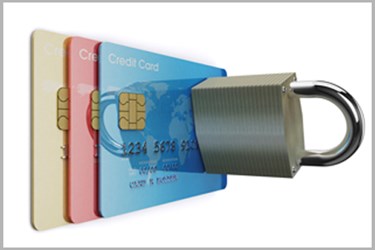Can EMV Chip Cards Protect Shoppers' Loyalty And Security?

By Dr. Lance B. Eliot, Global VP of Information Technology, Interactions
In response to continued retail hacks, several technologies are being introduced that promise to help keep consumers' financial information more secure. The most notable include EMV chip cards.
Payment security — particularly EMV chip adoption — is paramount for all retailers. The deadline for retailers to implement EMV technology or assume liability for consumer losses due to data theft or fraud went into effect October 1, 2015. Yet according to surveys, up to half of retailers have yet to fully implement the new technology.
In the latest Retail Perceptions survey from Interactions, we asked shoppers about their buying habits when it comes to security breaches and EMV chip credit cards. Besides the potential loss to your business if you suffer a security breach, the latest Retail Perceptions survey revealed 39 percent of shoppers say they will spend less than before at retailers who have experienced a security breach.
And, the survey showed 69 percent of shoppers say they won't sign-up for a store credit card once there's been a breach at the retailer. Likewise, about 56 percent say they would not be willing to sign-up for a loyalty card after there's been a breach.
In other words, a security breach will hurt when it happens — and it will have a long lasting impact as shoppers opt to avoid spending quite so readily at your store.
Some retailers falsely think that, if they are using EMV chip credit cards, they have eliminated any chance of security breaches at the register since the EMV approach is stronger than conventional credit cards. The EMV chips do improve security, but there are still lots of holes, including:
- since the U.S. isn't requiring a PIN, pretty much anybody can use an EMV chip card, whether it might possibly be a lost card or a stolen card
- the magnetic stripe on the EMV chip credit card is still vulnerable to being read by malware
- stores allowing both the dip-the-chip and the swipe method often lazily allow their staff to choose which way to go, and the staff frequently steer shoppers to the traditional swipe method since it is more familiar to shoppers
Ironically, whereas store staff might be angling shoppers away from the chip, Retail Perceptions found 71 percent of shoppers indicate using a chip makes them feel more secure when shopping. If your staff are steering those savvy shoppers away from using the chip, it can create tremendous confusion for shoppers and make them think twice about shopping at your establishment.
In fact, shoppers are already wary about whether retailers are really doing what is necessary to help protect their information as nearly half of shoppers (43 percent) don't trust companies to keep their personal information safe. Furthermore, about a third of shoppers (30 percent) doubt that companies are investing enough in security measures.
All of this distrust by shoppers is a sign that retailers are potentially going to lose the goose that laid the golden egg by not taking the appropriate system security precautions put in place. The one good sign for retailers is that at least shoppers are aware that security breaches are a cat and mouse game with the cyber-crooks and that it is hard for retailers to continually stay ahead of the criminals.
Nearly two-thirds of shoppers (64 percent) reluctantly say they accept that security breaches are now a part of the shopping process. This acceptance does not mean that they are happy about it, but just that they realize the tough problem of trying to make the shopping experience secure.
Retailers would be wise to audit their security mechanisms and see where there are gaps that need to be filled. The gaps are not only about the technology, but also about the proper processes and training of staff to make sure that system security is job number one.
